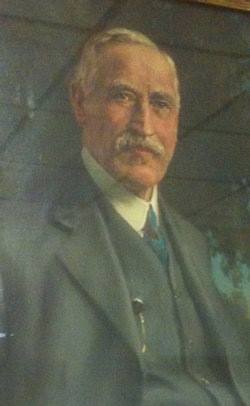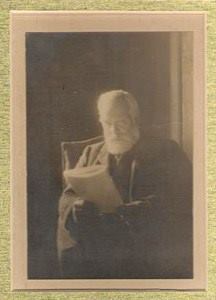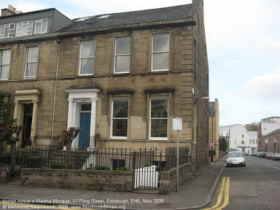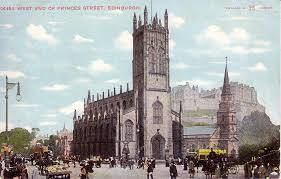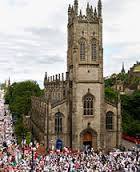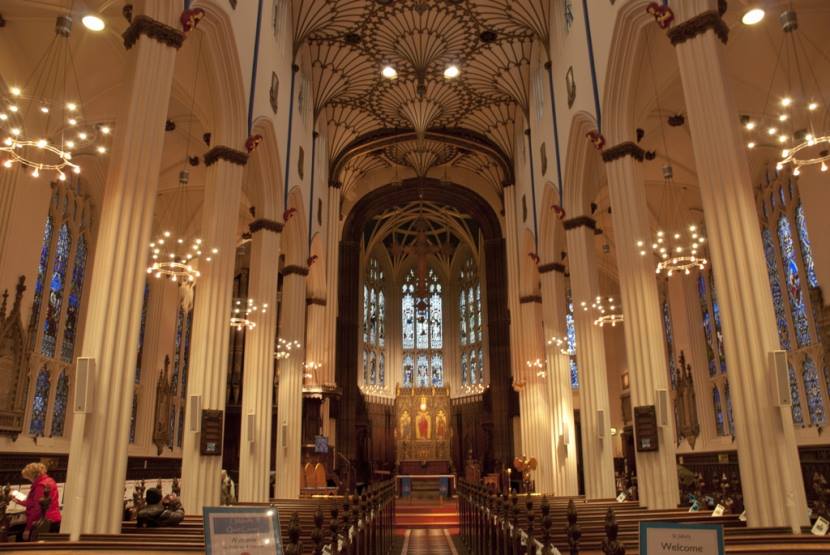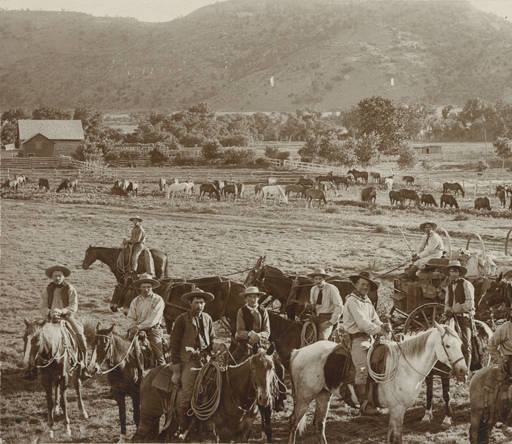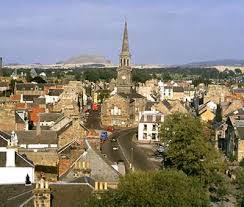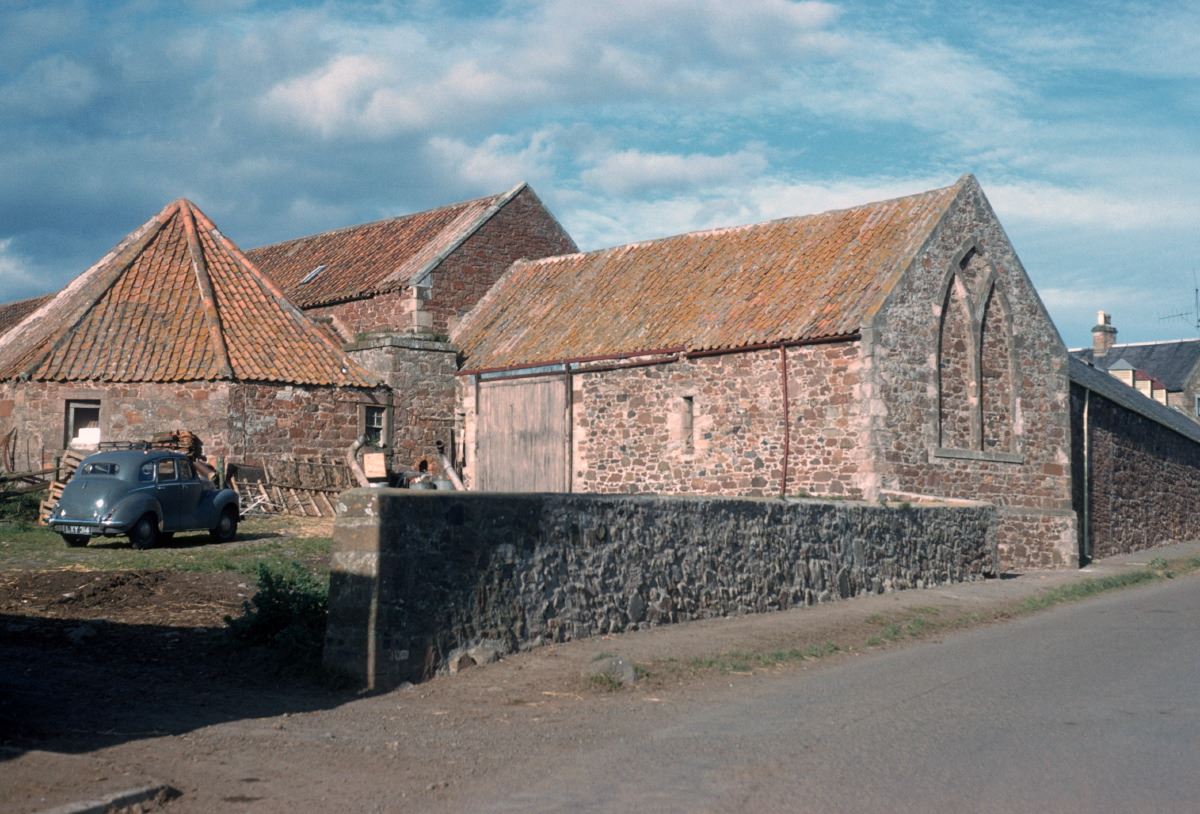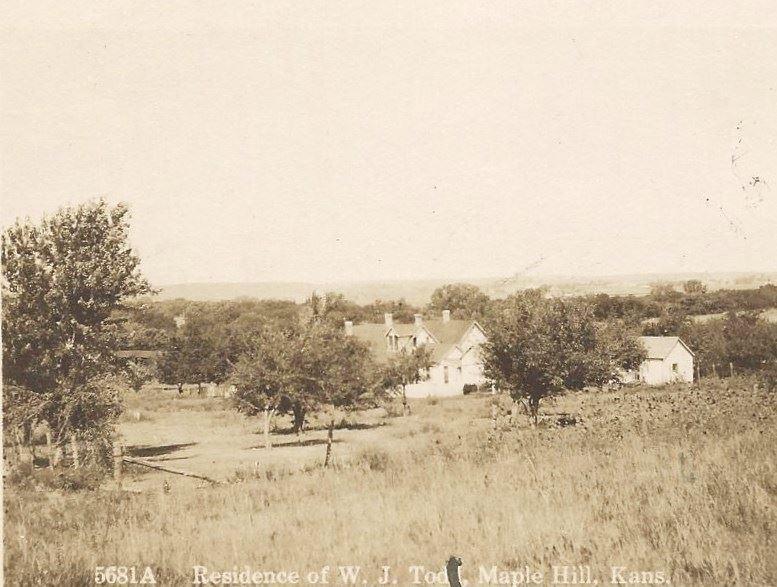William John Tod Family in Scotland and Maple Hill, Kansas
I rather dislike writing about Horace Adams and William John Tod, because I feel so inadequate in doing so. My information is limited to genealogical files on Ancestry.com and newspaper articles along with a very few remembrances from grandchildren and great grandchildren. Yet, I feel since these two families were so significant to the historical development of Maple Hill, it is important to get on the record basic information. And so, I shall continue writing and providing some information about William John Tod and his family.
I wish to begin by saying that the more common spelling of this familys name is Todd. I checked in the 2010 U. S. Census and there were just 243 families in America that used Tod rather than Todd. Those using Tod seem to have family origins in Ireland and then moved to Scotland. Tod is also far less common in Scotland than Todd. I was once speaking with the granddaughter of W. J. (he preferred to be called W. J.) Tod, Antoinette (Tod) Hawks, and I asked her about the spelling. She laughed and said shed share a favorite story about her grandfather.
During the last thirty years of his life, W. J. Tod held many important local, state and national offices in various livestock, education and political arenas. He was attending a National Cattlemen Association meeting in Denver once, while serving as president of the organization, and was asked by a reporter how to spell his last name. Antoinette chuckled as she said, Grandfather was always bigger than life and gave the reporter a mischievous look and said, Son, if one d is good enough for God, it is surely good enough for Tod.
The name Tod is found mostly in the area from Edinburgh, Midlothian County, Scotland south to the borderlands that separate Scotland and England. The name is taken from a shortened form of the Gaelic word which means fox. The first recorded use of the name Tod in English history, came in 1272 AD on a tax list from Midlothian County, Scotland.
For the purposes of this article, I have done genealogical research that identifies the parents, grandparents, and great grandparents of W. J. Tod. All were born and lived near Edinburgh, Midlothian County, Scotland. All of his parents and grandparents were farmers and would today be considered upper/middle class families since all were land owners rather than renting land as tenant farmers.
Here is a chronology of the William J. Tod family:
Parents of W. J. Tod : James Tod, born 1813
Anne Hurst, born 1826
Grandparents: William Tod, Born 1781
Elizabeth Bishop, born 1785
Great Grandparents: William Tod, born about 1750
Helen Harley, born about 1750
All of these families lived in or near Edinburgh, Midlothian, Scotland and it is very interesting that all of their collective children, grandchildren and great grandchildren, including W. J. Tod, were baptized at St. Cuthberts Episcopal Church in Edinburgh, Scotland. Even in the late 18th Century and the 19th Century, this was an urban church at the center of Edinburgh, rather than being a rural church. This again indicates the upper economic status of the family.
In looking at the genealogy of the Tod family, although the parents, grandparents and great grandparents were all engaged in agriculture, their children were all educated and went into various business pursuits. Some were general merchants, some wool merchants, one was a coffee and tea merchant, and at least two of the girls were governesses and teachers. It seemed that the majority were prosperous, owning their own property and homes. This information comes from the English/Scotland Census that was taken every 10 years from 1841 until today.
James Tod, father of William John Tod, was a well-to-do farmer and cattleman. The 1861 Census of Scotland, shows him living at Prestpans, Haddington, Midlothian County, Scotland where he was owner of 354 acres of land. He leased an additional 300 acres, and employed 11 men, 4 women and three boys on the farm. He and his wife Anne (Hurst) Tod occupied the manor house along with their seven children and employed three household servants. The farm was of a general nature with about 50 head of cattle. Hay, grain and other crops were also raised.
The Tod Farm was considerably larger than other farms and again points to the prosperity of the family. It would be here that W. J. Tod would learn about cattle and farming from his father.
Living in the Tod household in 1861, were his parents, James and Anne Tod, and his siblings, James, Jr., Anne M., Alexander, Edward, and Isabella F. Tod. In 1861, his parents were age 45 and 35 respectively. His brothers Alexander and Edward Tod were twins.
This farm still exists in pretty much its original configuration. Many of its stone buildings are on the National Register of Historic Places in Great Britain. For that reason, I have been able to find photographs and have included them.
I have not been able to find an 1871 Census for the Tods, nor have I been able to find a death date for James Tod. Under the Law of Primogeniture, James Tod, Jr. as the eldest son, should have inherited his fathers farm, possessions and money. However when the 1881 Census was taken, there is no mention of James Tod, Jr. and William J. Tod is listed as the Head of Household.
Both parents, James, Sr. and his wife Anne (Hurst) Tod are deceased in 1881. William J. Tod is 28-years-old and is the head of the household. His brothers John and Edward are shown to be living with him, as is his sister Isabella Frances Tod. He is shown to own and manage the same amounts of land as his father, nearly 600 acres, and to employ two household servants, 7 men, 4 women and 1 child in farm related activities.
With a relatively comfortable life, one has to wonder why it was that W. J. Tod left Scotland in 1882 to travel to America and begin his life working on and owning cattle ranches. I have also wondered if he somehow met and became acquainted with the Fowler family before leaving Scotland. The Fowler family owned some of the largest meat packing plants in England and Scotland, and moved their success in that industry to America where they owned packing operations in Chicago, Omaha, Des Moines, and Kansas City. W. J. Tod would later become a bookkeeper and manager for Fowler interests in Texas, and the Fowler Ranch in Maple Hill, Kansas which he would one day purchase from George Anderson Fowler.
Photo One – A portrait of W. J. Tod painted between 1900 and 1910.
Photo Two – A photograph of W. J. Tod taken late in his life, probably between 1925 and his death in 1928.
Photo Three – A picture of the home of John Tod, the grandfather of W. J. Tod, located in Haddington, Edinburgh, Scotland.
Photo Four – An image of St. Cuthbert’s Episcopal Church, Edinburgh, Scotland.
Photo Five – An image of St. Cuthbert’s Episcopal Church, Edinburgh, Scotland.
Photo Six – A photograph of the interior of St. Cuthbert’s Episcopal Church, Edinburgh, Scotland. This is the church where Tod family members were married and baptized over a period of 100 years.
Photo Seven – A photograph of The Prairie Cattle Company in Texas taken in 1883, the year after Tod immigrated there from Scotland. I don’t know if he is in the photograph.
Photo Eight – A photograph of Haddington, Edinburgh, Scotland where W. J. Tod was born.
Photo Nine – A photograph of the West Bearford Farm, which was owned and operated both by James Tod, father of W. J. Tod, and by W. J. Tod himself as a young man.
Photo Ten – A pictorial post card of the W. J. Tod Ranchhouse at Maple Hill, Kansas. The post card was used by Mrs. Tod and the stamp was canceled in 1910. This house burned to the ground in 1913. The fire was caused by a kerosene tank exploding on the cookstove in the kitchen. The Tods lived at the Windler Hotel in Maple Hill while a new home was being built. The new house was occupied in spring, 1914.
I did find this statement in a book about the cattle industry in Texas: William J. Tod, was general manager of the Prairie Cattle company, “mother of British Cattle Companies.” Tod was associated with George A. Fowler, son of the Fowler Brothers family, who had packing houses in Liverpool, England, New York and Chicago. The Fowler family built a beef and pork plant and lard refinery at Kansas City, Kansas, in 1881.
I also found this mention in The Texas Almanac, a history journal:
PRAIRIE CATTLE COMPANY. The Prairie Cattle Company, Limited, is sometimes called the “mother of British cattle companies” since it was the first foreign syndicate to take advantage of the southwestern “Beef Bonanza” of the early 1880s. It was established in 1880 by the Scottish American Mortgage Company, based in Edinburgh, and by the following year it had purchased the JJ spread in southeastern Colorado and the Hall brothers’ Cross L Ranch in northeastern New Mexico.
The company’s first big investment in the Texas Panhandle occurred in July 1881, when it purchased George W. Littlefields LIT Ranch for $253,000. Included in the transfer were 14,000 head of cattle, 250 saddle horses, and the LIT headquarters east of Tascosa. Subsequently the company added several small holdings to these properties. By the end of 1882 the Prairie Cattle Company owned close to 100,000 cattle and range rights to an unbroken, 300-mile strip of land from the Canadian River to the Arkansas River.
In 1885 the Prairie Cattle Company appointed W. J. Tod general manager. The syndicate hired Murdo Mackenzie, who immigrated from his native Scotland, to handle its financial affairs from the Prairie office in Trinidad, Colorado. Both men sought to put the business on a sound footing and improve the quality of Prairie Company cattle.
Mackenzie succeeded Todd as general manager in 1889 and remained in that position until 1890, when he resigned to take over the Matador Ranch. Two other Matador men, Henry H. Johnstone and Arthur G. Ligertwood, also started out with the Prairie Company. J. C. Johnson succeeded Mackenzie as manager and remained until the Prairie Cattle Company ceased operations in 1917.
The company prospered for a time. But in the January blizzard of 1886 many of its cattle froze to death at the great Panhandle drift fences, which ranchers below the Canadian River had built to control the spread of Texas fever. Mackenzie managed to save the syndicate by dropping the price of beef and by selling off land in small parcels. In 1902 the company purchased the old LE Ranch rangeland from the Reynolds Land and Cattle Company.
Nevertheless, by 1912 the Prairie Company held only 200,000 acres in the northern Panhandle. The LIT properties were sold to Lee Bivins in 1913, and the LE range was sold to J. M. Shelton in May 1915. By 1916 the Prairie Cattle Company, at one time the world’s largest British investment company, had been liquidated.
A brief statement in W. J. Tods obituary in 1928 related a little further information:
Tod came to Kansas in 1883. He was a ranch manager and cowboy in Texas and Colorado before settling at Maple Hill in 1888. He had worked with George A. Fowler on other ranch properties in Texas and New Mexico and went into partnership with George A. Fowler in raising cattle at Maple Hill. Tod was both the foreman/boss and the bookkeeper at Maple Hill first, but advanced quickly.
The livestock industry owes a great deal to Mr. Tod who owned the 4,000 acre Fowler Ranch and the 56,000 acre Cross-L Ranch in New Mexico. He was an organizer of the Kansas State Livestock Association in 1894 and served as president in 1913. He was a director of the American Royal and the Kansas National Livestock Show. He served as a member of the State Board of Regents, which is responsible for state colleges and schools.
I believe I will end this posting here and continue with the lives of W. J. Tod and his wife Margaret (Saunders) Tod in the next posting.
Photo One – A portrait of W. J. Tod painted between 1900-1910.
Photo Two – A photograph taken shortly before the death of W. J. Tod in 1928.
Photo Three – A photograph of the John Tod House in Edinburgh, Scotland. This was the home of John’s Tod grandparents.
Photo Four – This is an image of St. Cuthbert’s Episcopal Church in Edinburgh, Scotland. This was the church of W. J. Tod’s parents, grandparents and great grandparents.
Photo Five – A second image of St. Cuthbert’s Episcopal Church in Edinburgh, Scotland.
Photo Six – A photograph of the interior of St. Cuthbert’s Episcopal Church, Edinburgh, Scotland. This is where all of the Tod family had their children baptized and many of the Tod weddings were held in this church.
Photo Seven – A picture of Haddington, Edinburgh, Midlothian, Scotland.
Photo Eight – A photograph of the Prairie Cattle Company Ranch in Texas where W. J. Tod began his ranching career.
Photo Nine – A photograph from the British National Register of Historic Places, of the farmstead and manor house where the Tod Family lived. It was known as West Bearford Farm.
Photo Ten – A pictorial postcard depicting the W. J. Tod Ranch house in 1910. In 1913, this house burned to the ground after the explosion of a kerosene tank in the kitchen. The Tods lived at the Windler Hotel in Maple Hill, until their new home could be completed in 1914.
